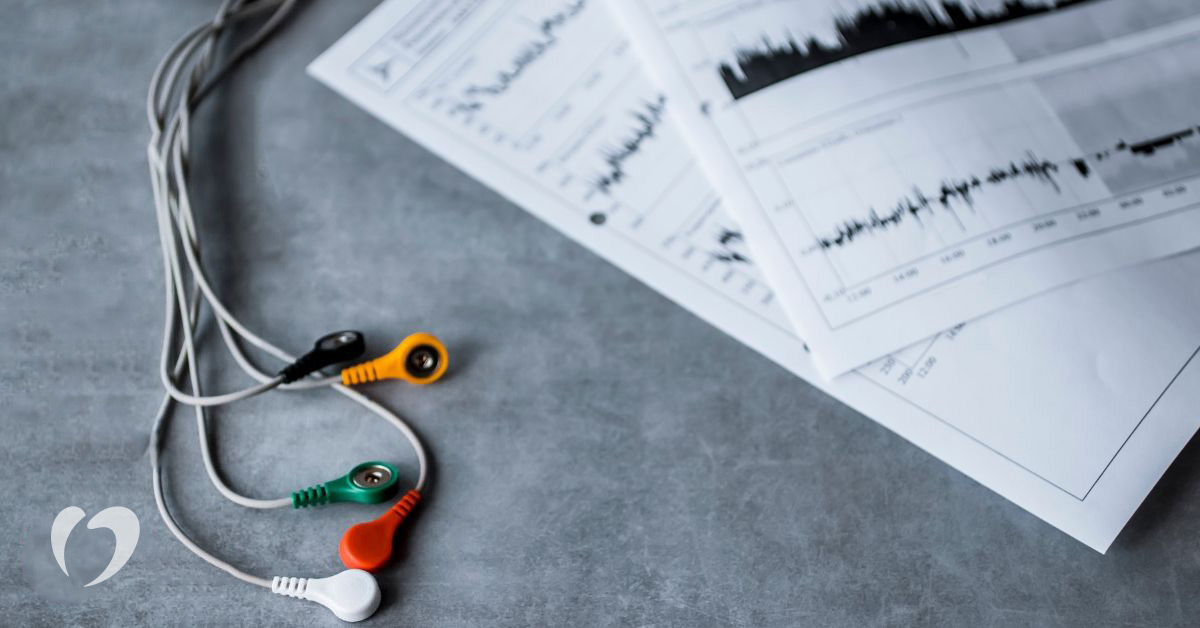Diagnosing Abnormal Heart Rhythms

An arrhythmia, also known as an abnormal heart rhythm, is when the heart beats too fast, too slow, or irregularly. Arrhythmia carries a wide range of symptoms and severity, from arrythmias with no symptoms or sporadic symptoms to those with persistent symptoms that can be life-threatening.
Many of the symptoms overlap with other common heart conditions. Common symptoms include racing heartbeat, fluttering in the chest, fatigue, dizziness, and fainting.
The first step in diagnosing abnormal heart rhythms is to discuss any symptoms and review the patient’s health history and any family history of heart disease. Then, your physician may recommend a variety of potential tests to diagnose the arrhythmia and develop a treatment plan.
Electrocardiogram (EKG or ECG)
This commonly used test records the timing and length of each phase of the heartbeat. It is noninvasive and uses electrodes attached to the chest and sometimes arms of the patient to record the heartbeat. Many ECGs are done while the patient is resting, but sometimes an exercise EKG, or stress test, is prescribed. In this instance, the monitors record the heartbeat while the patient walks on a treadmill or rides a stationary bike. If the patient is unable to exercise, medication is used to induce a higher heart rate to complete the test.
Portable monitors
Because arrhythmias can be inconsistent and symptoms may be sporadic, an episode of arrhythmia may not occur during the office visit and EKG. In these cases, a portable monitor is used to record events during a longer period while patients go about their daily tasks. Patients may be asked to keep a record of any symptoms that occur while wearing a portable monitor.
Portable monitors include:
- Holter monitors – This type of portable monitor records events for 24 to 48 hours. Much like an EKG, electrodes are attached to the chest and connected to a small device. These are worn all the time, except in conditions that may make the pads come loose, such as showering, swimming, or activities that cause excessive sweating.
- Event monitors – These are similar to Holter monitors, but an event monitor does not record continuously. When a patient feels symptoms, they press a button to begin recording. These can be worn for a longer time than a Holter monitor.
- Mobile cardiac monitor – This type of monitor can record continuously for up to 30 days. They are smaller and less intrusive, but they are also more expensive and less commonly used.
Echocardiogram
Echocardiograms are sonograms of the heart that provide a picture of the heart as it functions. They are useful in determining structural issues such as muscle abnormalities and valve problems that can lead to arrhythmia.
Electrophysiological testing and mapping
These tests include nonsurgical, minimally invasive procedures. During electrophysiological testing, the heart is accessed via a catheter threaded through the veins. A catheter procedure can provide a clear picture of the cause of certain arrhythmias, as electrodes on the tip of the catheter provide the ability to map electrical impulses in the heart. The electrodes can also be used to safely simulate conditions that may produce or eliminate the arrhythmia. This information can be used to determine the best treatment option.
Tilt table
Particularly in the case of fainting, a doctor may use a tilt table to simulate conditions such as a change in position or blood pressure that may be causing an arrhythmia. During this test, heart rate and blood pressure is monitored as the table is tilted from a flat position to erect.
Implantable loop recorder
Sometimes symptoms occur very rarely or intermittently and can make it more difficult to diagnose an arrhythmia. In these cases, a tiny recording device is implanted above the heart to monitor events for up to two years.
If you have any symptoms that indicate potential arrhythmia, accurate diagnosis is crucial to proper treatment. While some arrhythmias warrant little more than monitoring for increased symptoms, others can be serious and require treatment to prevent complications. Contact OHH to schedule an appointment with one of our Heart Rhythm Institute physicians.
